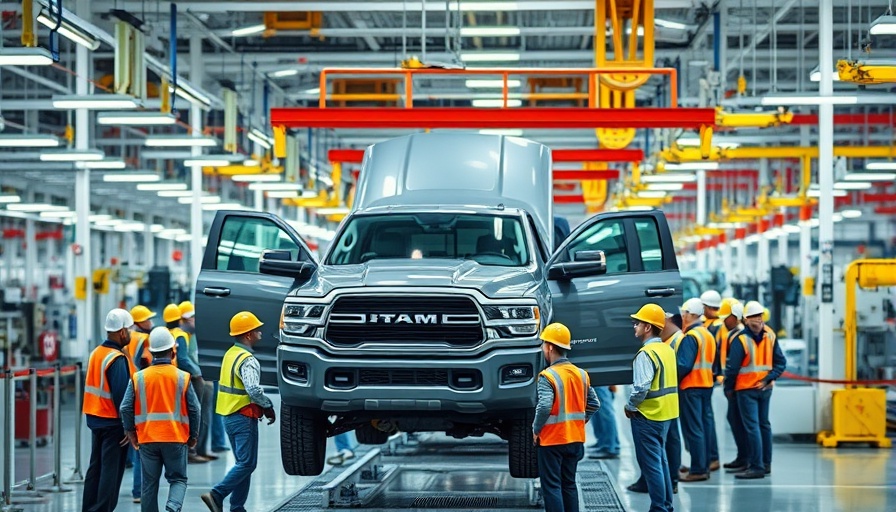
The Shift from Marketing to Manufacturing: Ford’s American Dream Realized
Two years ago, Ford became a talking point for staying true to its American roots despite the fluctuating landscape of global manufacturing. Today, its claims about American-made vehicles hold more weight than ever. In a climate charged with trade tariffs and geopolitical tensions, Ford is not just preaching patriotism; it’s manifesting it in its operations. As the narrative has evolved, the potential for growth within the U.S. market has solidified Ford's position among its competitors.
The Tariff Crisis and Its Silver Lining
The tumultuous imposition of tariffs has created both challenges and opportunities for future-focused companies like Ford. The 25% tariff on imported auto parts launched by the Trump Administration a few years back transformed the competitive playing field. Ford’s substantial domestic production has allowed it to edge ahead, giving them an advantage no longer just in rhetoric but in the profitability of its operational model. CEO Jim Farley has aptly summed up Ford’s position: the automaker “with the largest U.S. footprint will have a big advantage,” a mantra that echoes through the halls of other manufacturers.
Competitive Landscape: U.S. Manufacturing vs. Global Sourcing
There’s no denying that Ford, with over 77% of its vehicles fabricated in the U.S., is leading the charge but faces significant competition. While Stellantis lags behind with 57% and General Motors and Nissan hover around 52%, it’s Tesla that shines in the all-American manufacturing spotlight with 100% domestic production. However, Tesla's grasp on the overall automotive market is relatively modest compared to Ford's grip on approximately 13%. This juxtaposition highlights a crucial tension between fostering American manufacturing and relying on global supply chains, particularly in the case of electric vehicles (EV) where sourcing of specialized parts can complicate a fully domestic narrative.
Future-Proofing Through Localized Manufacturing
As Ford continues to carve its path in the EV market, the balance it strikes between domestic assembly and international part sourcing will be pivotal. While plants in Kentucky and Ohio serve as hubs for their F-Series trucks, the Mustang Mach-E and Bronco Sport illustrate a strategy that still leans on overseas production. Such a hybrid model points to a critical decision-making challenge for executive leaders: balancing domestic loyalty while navigating costs associated with global sourcing. Future discussions will likely revolve around whether companies should invest further in their U.S. manufacturing capacities to hedge against potential geopolitical instability.
Taking Action in a Volatile Market
The landscape is evolving, but for companies looking to thrive, it’s essential to consider how domestic manufacturing might fit into their broader strategic vision. Executives must weigh factors such as reliability, component sourcing, and consumer sentiment—each playing into brand loyalty and corporate responsibility. As Ford showcases, emphasizing a strong domestic presence can reinforce trust amid uncertainty.
Conclusion: The Golden Opportunity for American-Made Brands
The past two years have demonstrated a palpable shift in how we perceive manufacturing and its relationship with trade policies. Brands touting significant domestic production are now backed by conviction. Ford’s journey from mere marketing to meaningful impact is a telltale example of what the future may hold for companies anchored in their American roots. As we gaze ahead, businesses should embrace the opportunity to fortify their positions as suppliers of American-made products, marrying ideology with practical production.
 Add Row
Add Row  Add
Add 




Write A Comment